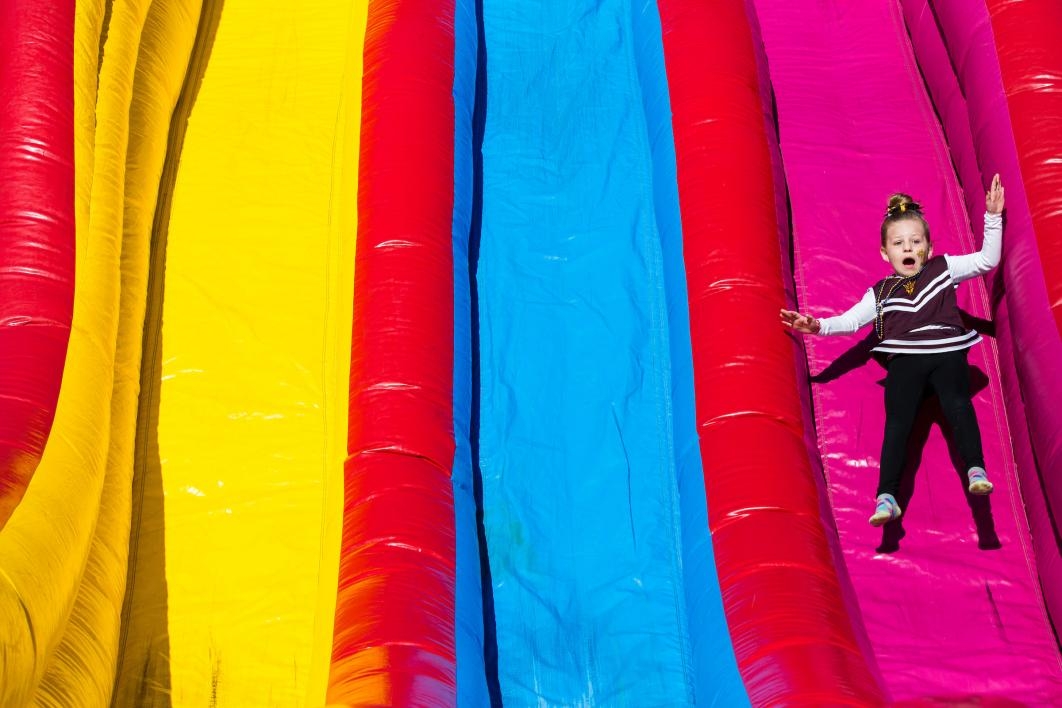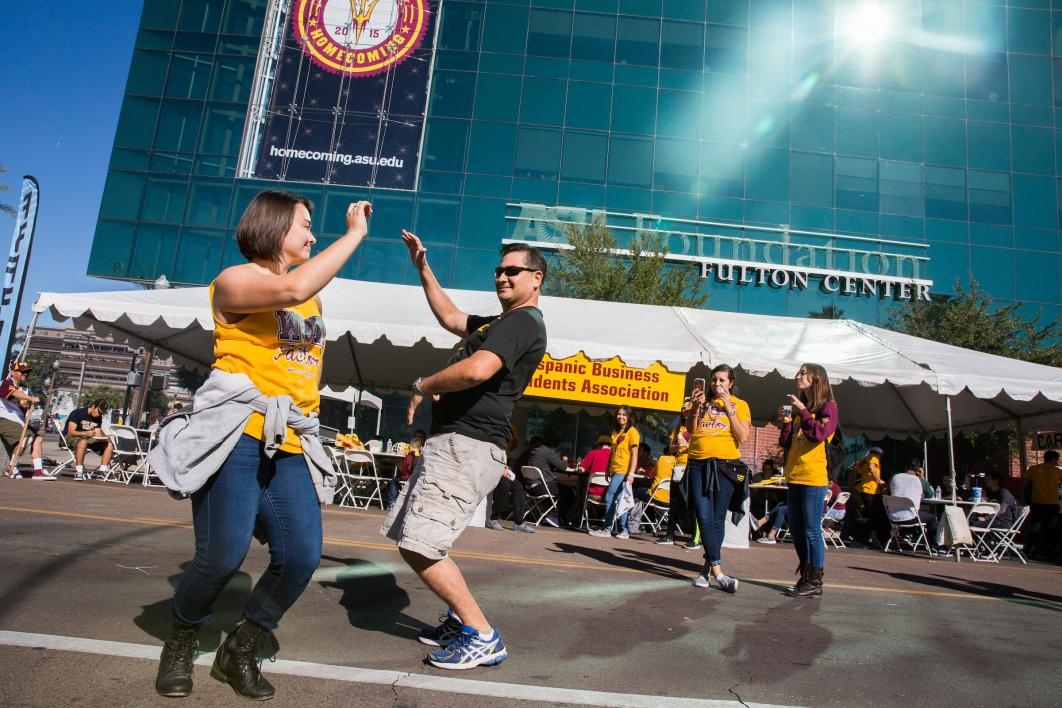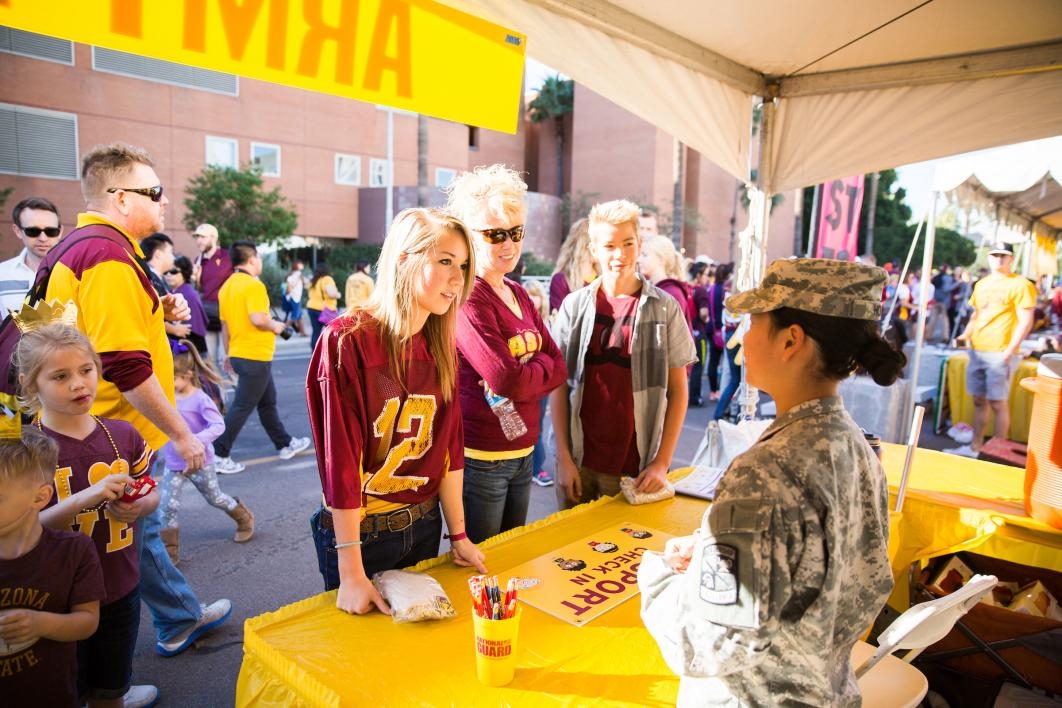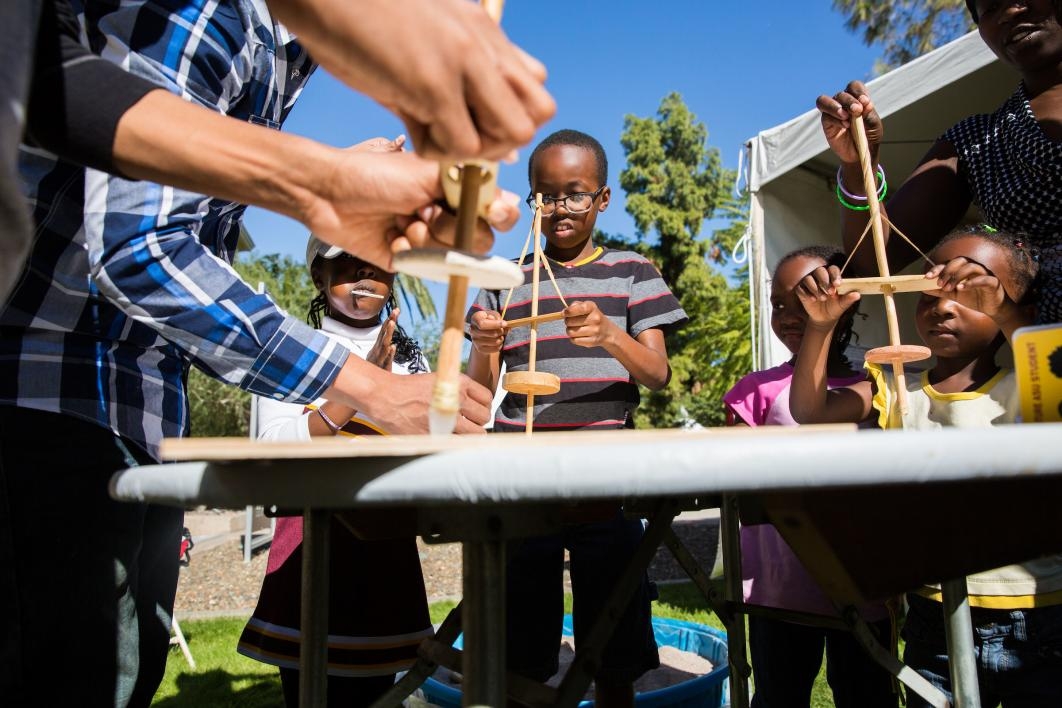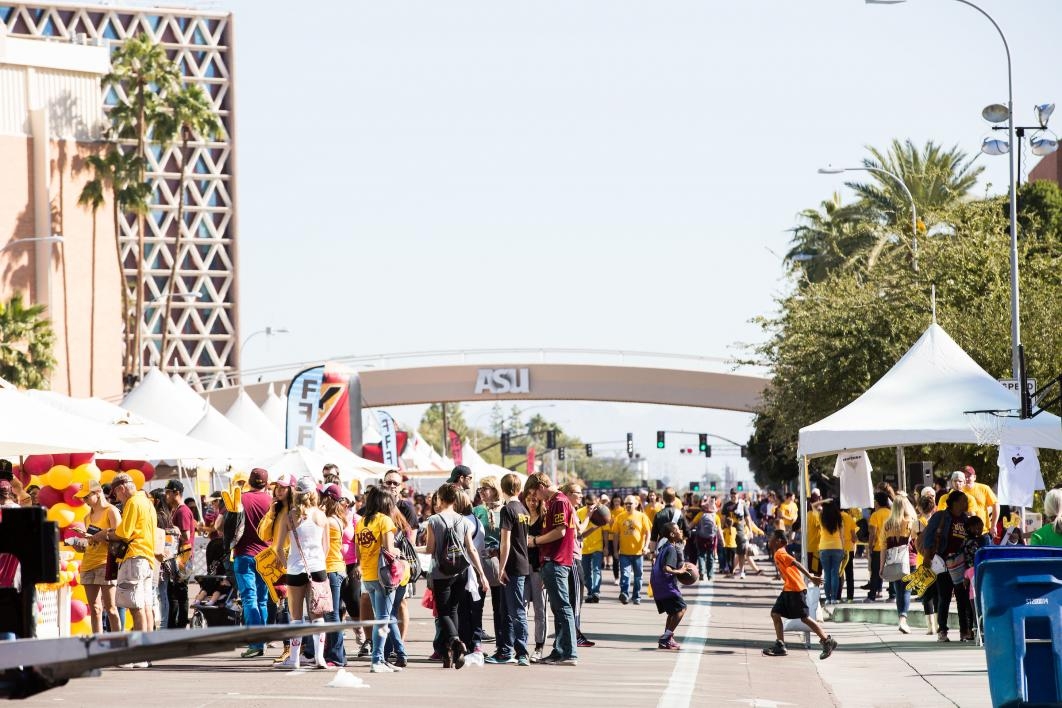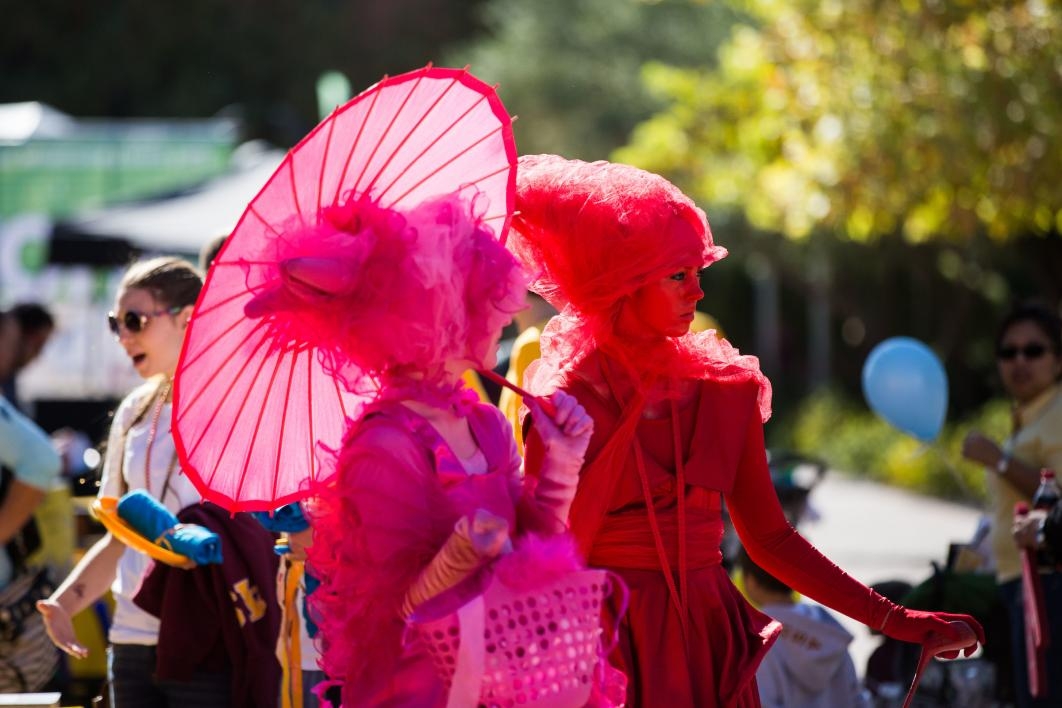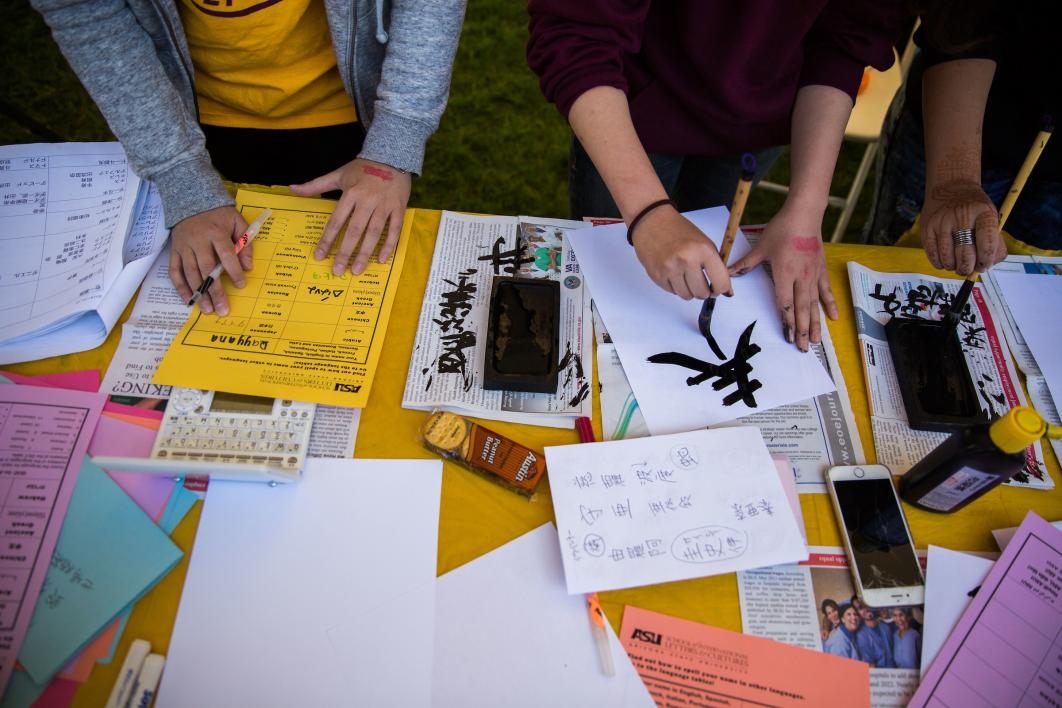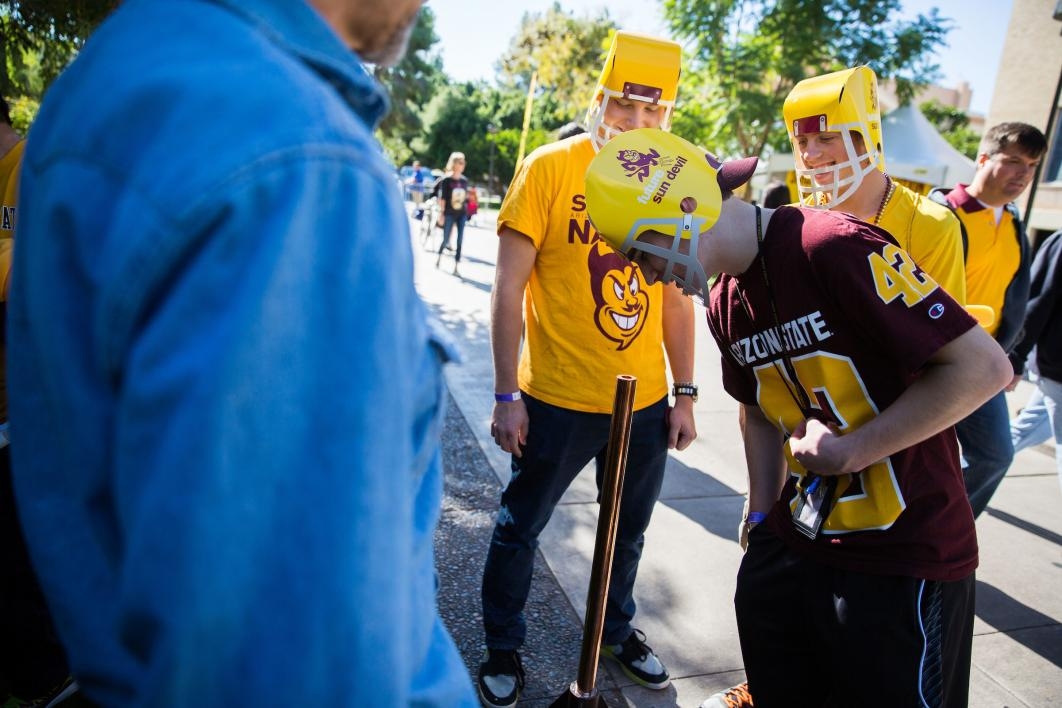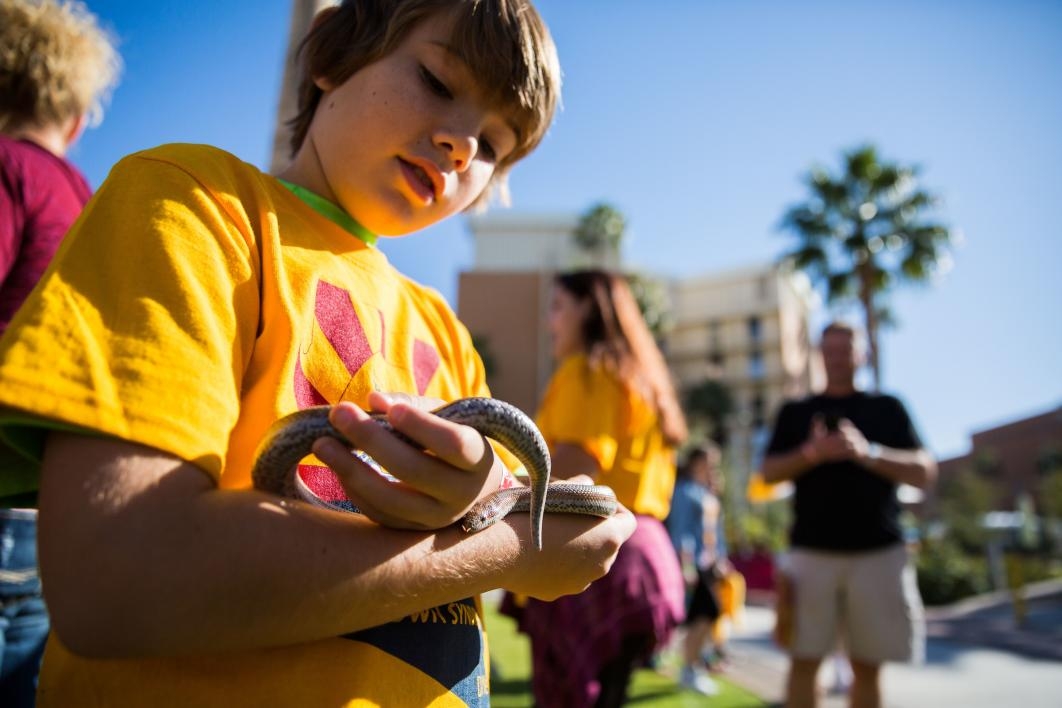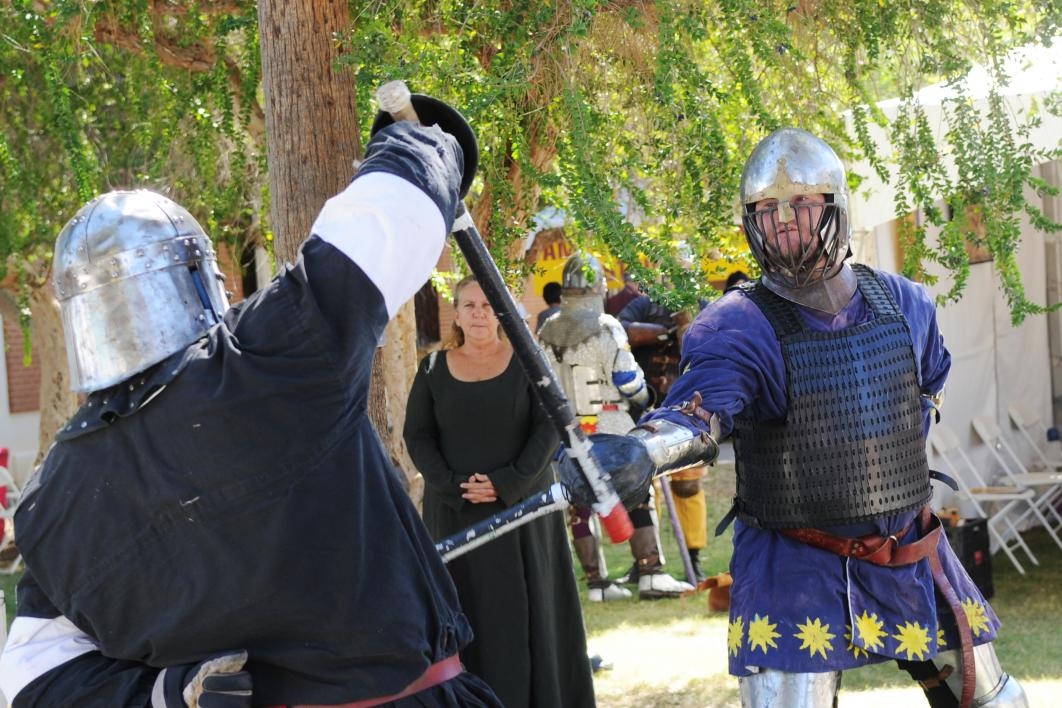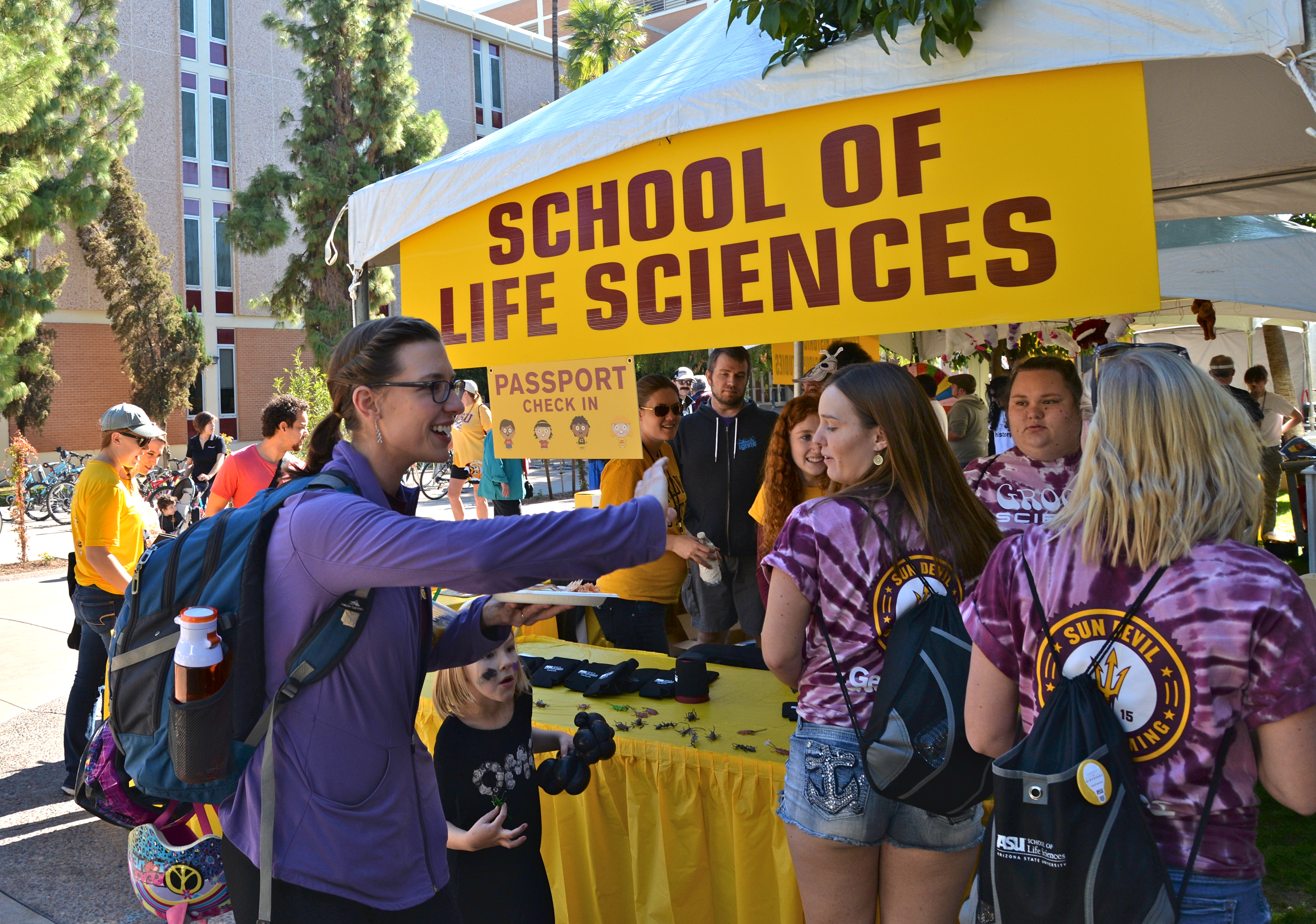Homecoming Block Party brings fun, learning to the public
ASU biologist Melissa Wilson Sayres — whose banana-DNA demo will be one of scores of interactive booths — says it's key for people to meet scientists face to face
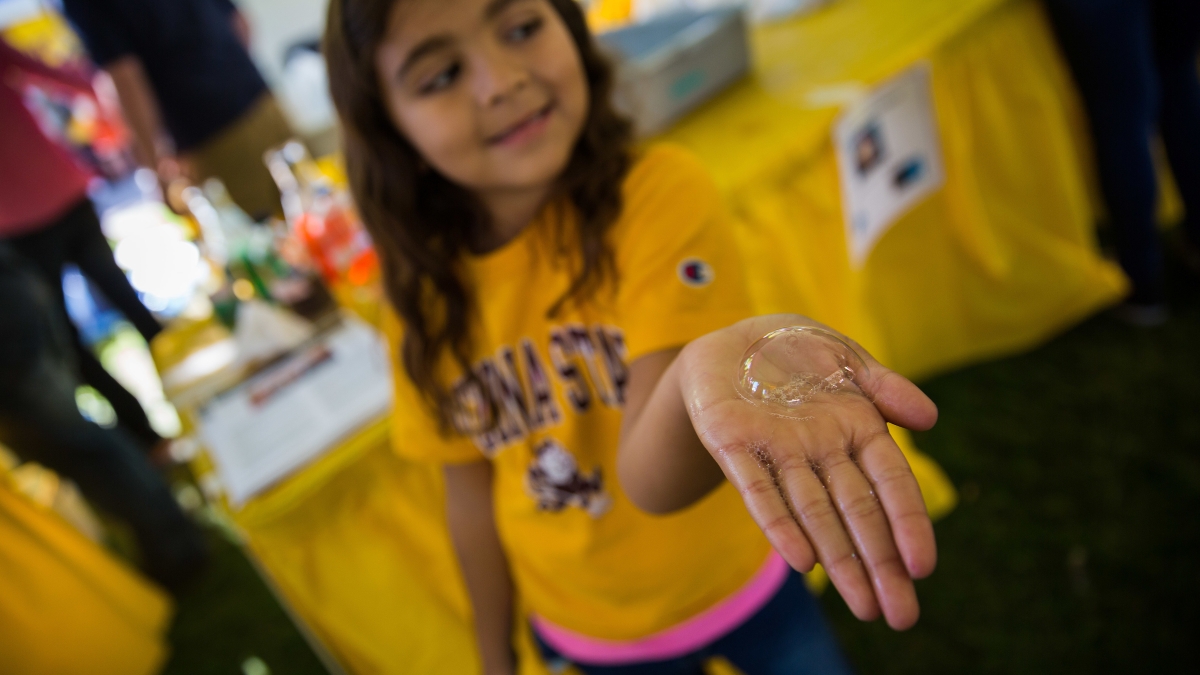
Melissa Wilson Sayres thinks that people need to interact with scientists more often in their daily lives.
“We’re exposed to teachers and we’re exposed to doctors and nurses, but there’s not a routine place where you get to go and just talk to a scientist,” said Wilson Sayres, a computational biologist and assistant professor in the School of Life Sciences at Arizona State University.
“Because we have this ‘white lab coat’ view of a scientist, it can seem unattainable when you never have the chance to meet scientists.”
Visitors to ASU’s Homecoming Block Party this Saturday on the Tempe campus will have plenty of chances to interact with scientists — as well as artists, writers, mathematicians, historians and more.
The annual family-friendly event, which is free and open to the public, features more than 100 tents and displays that put the spotlight on fun, interactive learning and introduce students and the public alike to all that ASU has to offer. Among the many offerings, visitors can explore a student-built race car, learn how to build a catapult, try on medieval chain mail and watch swordplay demonstrations, have their fortune told by the Math Swami, play games, win prizes and — in Wilson Sayres’ case, learn how to extract DNA from a banana at the School of Life Sciences booth. (Find more details at the end of this story.)
Wilson SayresWilson Sayres also is a faculty member in ASU’s Center for Evolution and Medicine. has been doing outreach for years, and earlier this year she won “I’m a Scientist USA”, an “American Idol”-style contest in which she and other scientists interacted online with young people, who then “voted off” participants. Last spring, she launched a crowd-sourcing campaign that raised $10,000 to help fund her Gila monster genome-sequencing project.
She spoke with ASU Now about how she promotes her career in science and what’s next for her lab.
Question: How have you promoted science as a career?
Answer: I’ve been doing science outreach for 12 years or more in a variety of different ways. As a grad student, I organized workshops for Girl Scouts so they could earn their science badges.
We did an event reaching 10,000 at the U.S.A. Science and Engineering Fest where we were teaching them about polymer chemistry. So sometimes things that weren’t really specific in my area of genetics and genomics.
We did an event for first graders where we did “dragon genetics” — they figured out if their dragon would have wings or could breathe fire.
We want to go to retirement communities because that’s an area of outreach that’s been overlooked. Most outreach is K-12 education, and in Arizona, we have a wealth of people who have these life experiences but were not commonly taught about genetics.
I also respond to questions on Ask a Biologist.
ASU computational biologist Melissa Wilson Sayres (at the 2015 Homecoming Block Party) will be showing how to extract DNA from a banana at the School of Life Sciences booth on Saturday. Photo by Jacob Sahertian/ASU
Q: How did you come to be in “I’m a Scientist USA”?
A: It was like a reality show with five scientists. We spent the first week live-chatting with students. It was East Coast time so I would start at 5 a.m. and chat with one or two or three classes every day. They would ask questions about science or about life or about Pokémon, just anything.
The kids ranged from about fourth grade to seniors. Sometimes they got really off track, and sometimes we had some really insightful discussions about genetics.
The largest proportion of questions were about heritable genetic disease. We had a couple special-needs classrooms and they were asking about their own conditions, and it’s great because they want to talk about it but it’s challenging because we haven’t figured out the genetic basis for a lot of diseases. And some of them have a huge environmental component.
They also wanted to know my favorite food and whether I had any pets.
Every week they voted someone off. There was one scientist who studied scabs, and I thought ‘There is no way I was going to beat the scab guy.’ But I did.
More than trying to get out information, it was to humanize scientists so they could envision themselves as scientists.
Q: What did you win?
A: I won $500, and I bought a handmade Gila monster model and a replica of a Gila monster skull.
We’ll being doing more outreach about this animal because either people don’t know about it or they’re afraid of it.
Q: Why are Gila monsters important?
A: Their saliva is venomous and feels like flaming lava. It’s not dangerous, it just hurts.
The venom has a peptide in it that used to treat type 2 diabetes and it works really well, but we don’t know anything elseSequencing the genome will allow scientists to learn whether they have other medicinal properties. about the Gila monster genome.
So to map the genome, we take a cell and we mash up the cells and get the DNA out. That’s the extraction part.
So in the lab we’ve sent off the DNA to a sequencer, and it will come back as an electronic file.
Then the hard part starts. It takes a while to put this giant puzzle together without knowing what it will look like. It has about 2 billion base pairs. We don’t know which part are functional genes and which are spacers between the genes. We talk about genetics all the time, which makes it seem easy, but it isn’t.
We chop it into pieces and sequence it, and then we have to put those pieces back together. That’s what bioinformatics is.
If we really want to know about the Gila monster, we need to get that reference genome. Once we have that we can learn more about what we should be doing to conserve them.
Video: Melissa Wilson Sayres demonstrates extracting DNA from bananas.
ASU Homecoming Block Party
What: More than 100 ASU departments and organizations will welcome visitors to learn about science, the arts, humanities and more. There will be games, photo booths, prizes, selfie ops, music and more.
When: 3-7 p.m. Saturday, Oct. 22. The Homecoming Parade — featuring classic cars, floats, the Sun Devil Marching Band and Sparky — begins at 3 p.m. along University Drive, and the Block Party runs from then until the 7 p.m. start of the Sun Devils football game against Washington State.
Where: The tents and displays will radiate out from the Old Main Lawn on the Tempe campus, covering 14 acres.
Admission: Free and open to the public. Find information on free parking at the link below. Please do not bring pets to the event.
Details: https://asuevents.asu.edu/content/homecoming-block-party
Top photo: Sofia Diaz holds out her bubble after performing a science experiment during the 2015 Homecoming Block Party in Tempe. Photo by Deanna Dent/ASU Now
More Science and technology
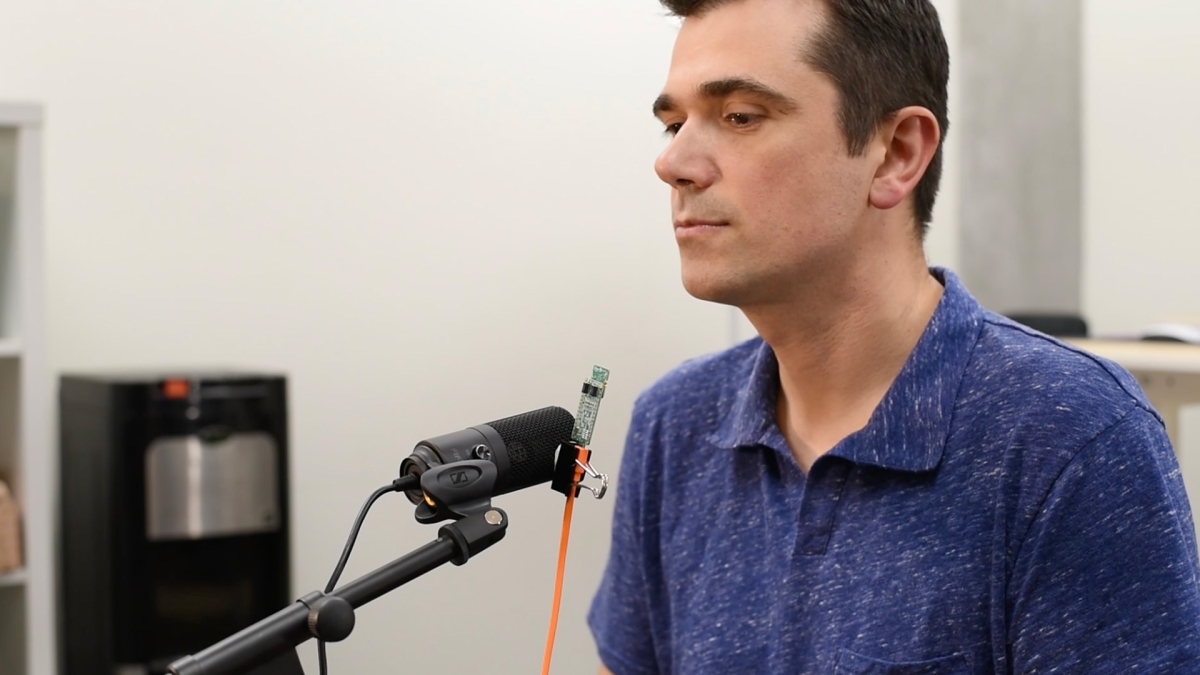
ASU researchers develop special microphone to verify human speech
Deepfakes have become a large societal concern with the advent of video and audio content generated by artificial intelligence, or AI. A deepfake is a convincing imitation that blurs the lines…
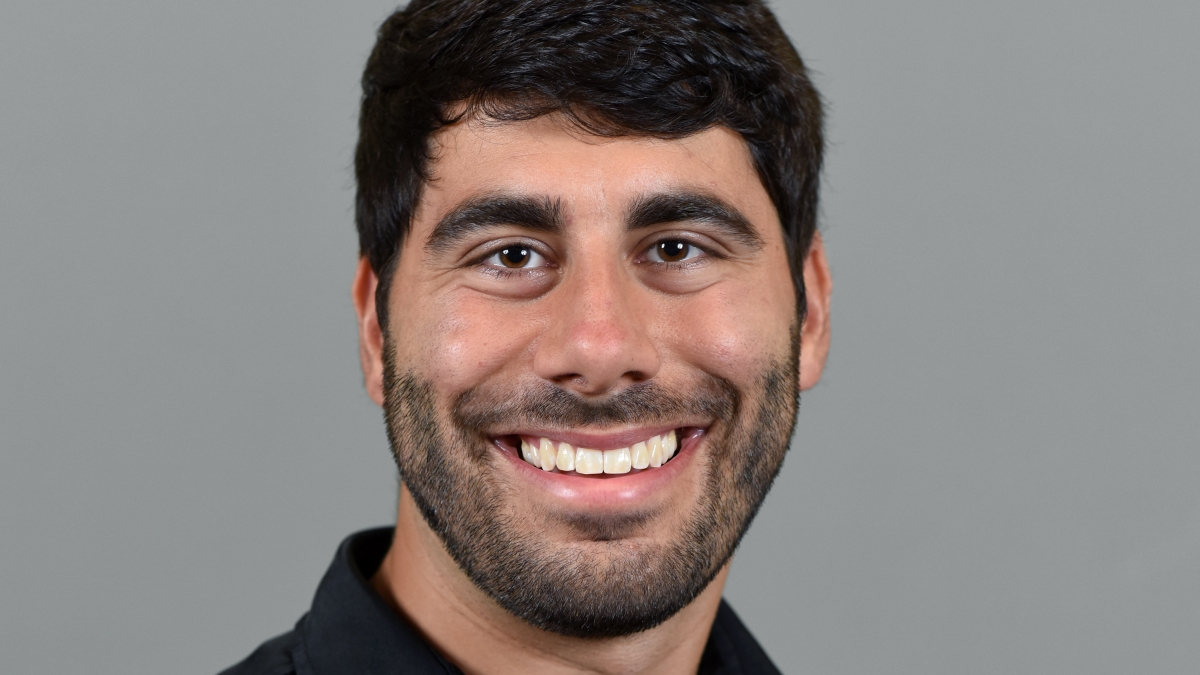
Leading students toward a future of renewable energy
Nicholas Rolston, assistant professor in the School of Electrical, Computer and Energy Engineering, one of the Ira A. Fulton Schools of Engineering at Arizona State University, has found his passion…
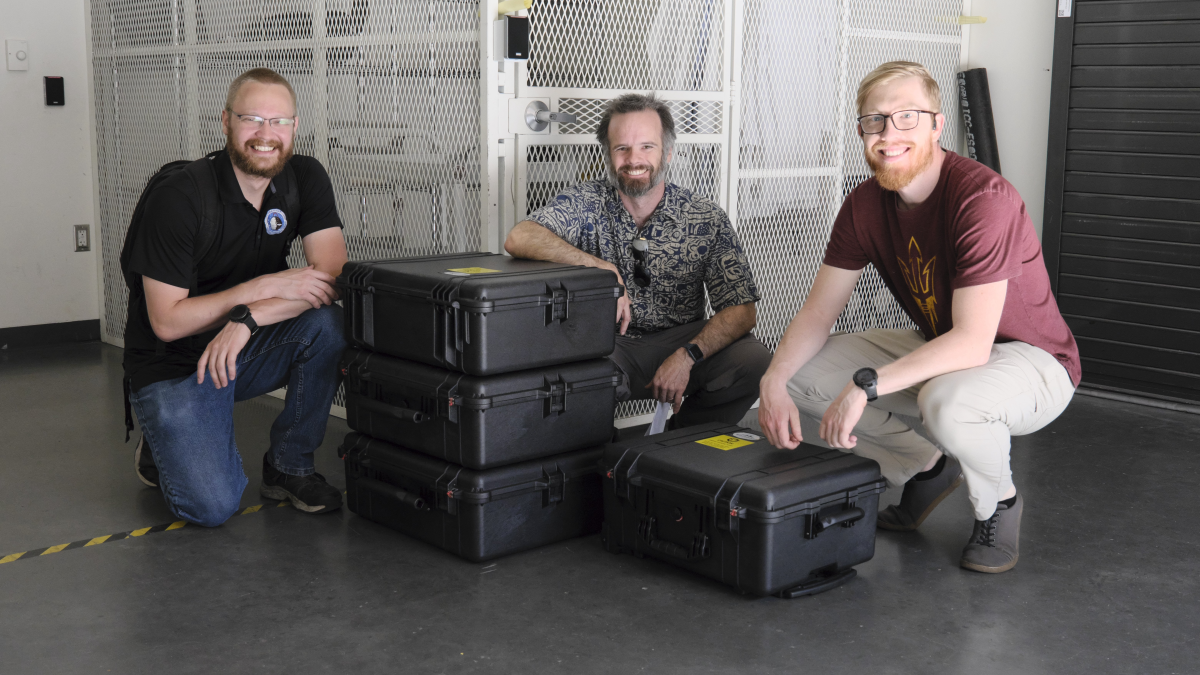
SPARCS mission spacecraft bus delivered to ASU for final assembly
The Arizona State University team that is building the NASA-funded Star-Planet Activity Research CubeSat, or SPARCS, cleared a major milestone this week — receiving its spacecraft bus at the School…
